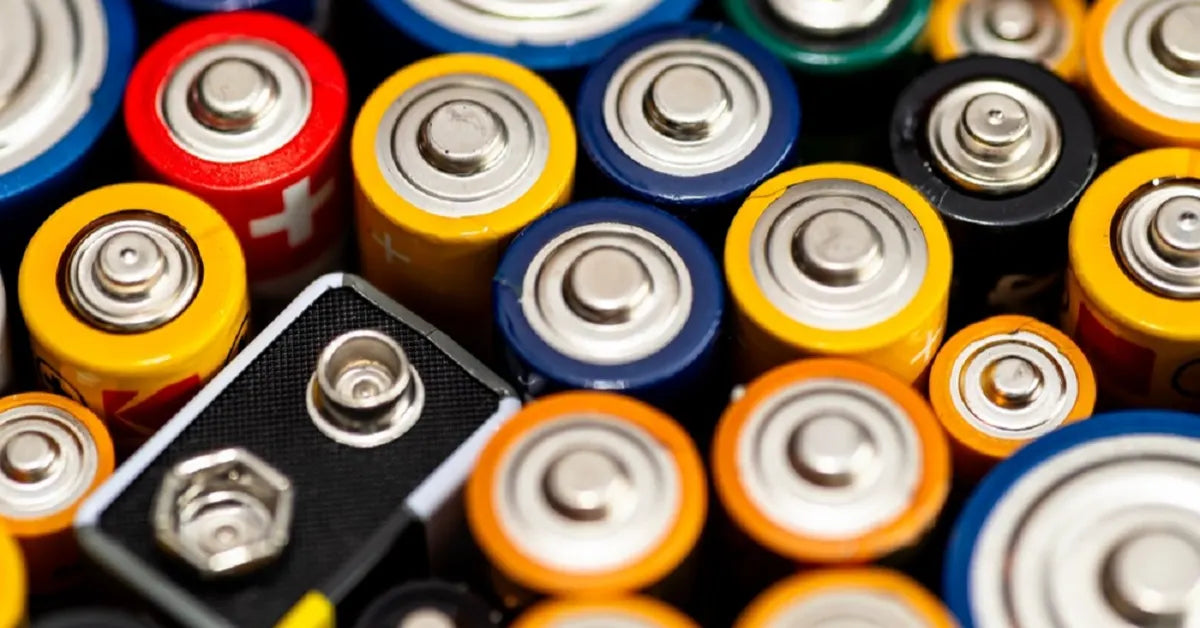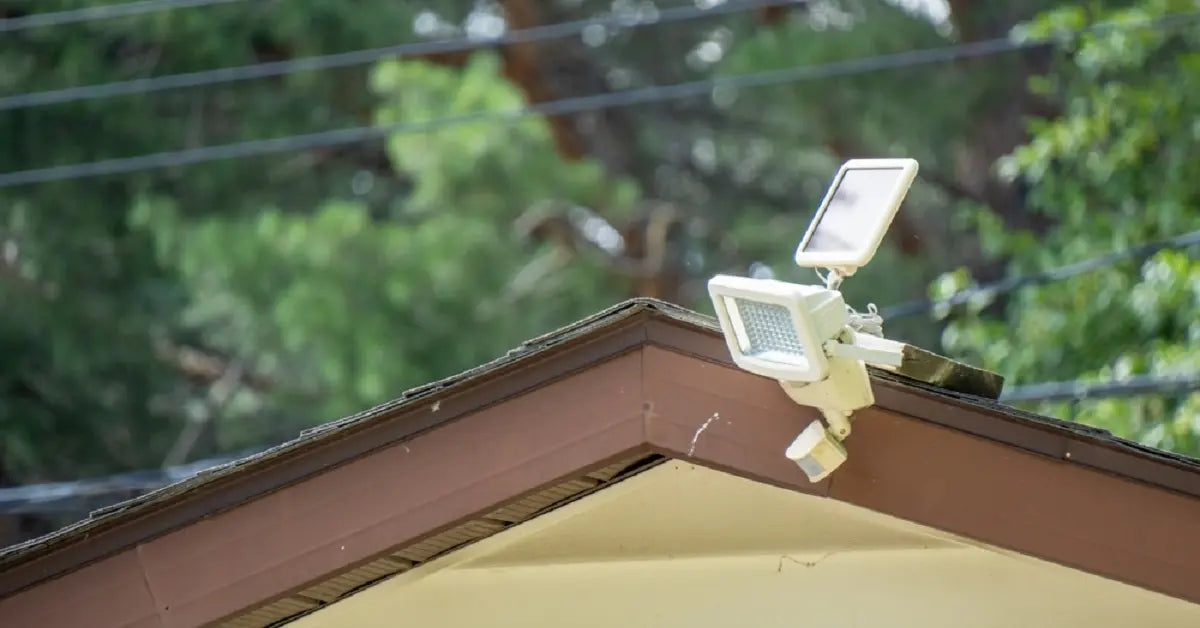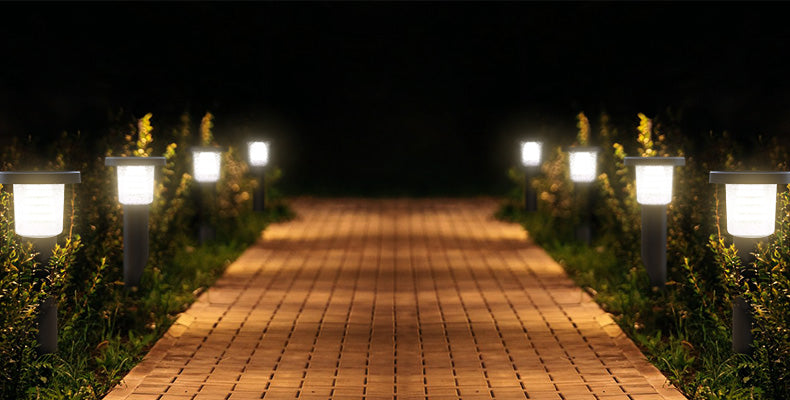The Short Answer: Can You Charge Solar Lights Indoors?
Yes, you can absolutely charge solar lights indoors. I've tested multiple methods myself, and while it's not as efficient as direct sunlight, it works when you need it most.
You have several options: positioning your lights near sunny windows, using artificial lighting sources like LED or incandescent bulbs, or even plugging them into a USB port if your model supports it. These workarounds are lifesavers during those brutal winter months or when your garden just doesn't get enough sun exposure.
But here's what I've learned after years of working with solar technology: indoor charging solves the immediate problem, but it's not a long-term strategy. Let me show you both the quick fixes and the permanent solutions.
Method 1: Charging Solar Lights with Artificial Light
Your solar light's photovoltaic cells are pretty clever. They can absorb specific wavelengths from artificial sources and convert them into electrical energy. The catch? It takes significantly longer than outdoor charging—typically 6 to 12 hours for a decent charge.
Incandescent Bulbs: The Old-School Option

Incandescent bulbs emit a light spectrum surprisingly similar to natural sunlight. This makes them one of your better indoor options. For faster results, I recommend using a 60-watt to 100-watt bulb and positioning your solar panel as close as safely possible to the light source.
The closer you get, the more photons hit those cells. Just don't get too close—we'll talk about safety concerns in a moment.
LED Light Charging: The Modern Choice
LED bulbs are my personal favorite for indoor charging. They produce bright, consistent light and cover a broader range of the light spectrum compared to incandescent bulbs. This wider spectrum is more effective at moving electrons within the photovoltaic cells, generating electricity more efficiently.
For an even quicker charge, try using high-efficiency LED sources like headlamps or powerful LED torches. Position them directly over your solar panel and let them work their magic.
Fluorescent Lighting: The Middle Ground
Fluorescent lights emit a broad spectrum that your photovoltaic cells can absorb. To speed up the process, use Compact Fluorescent Lamps (CFLs) or tube lights. Place your solar panel as close as possible to the bulb for maximum efficiency.
USB Charging: The Emergency Backup
Many modern solar lights come equipped with USB ports for direct electrical charging. This method is incredibly convenient during cloudy, rainy, or particularly dark days. Charging via USB usually takes several hours to reach full capacity, but it's reliable and doesn't depend on light at all.
Method 2: Charging Solar Lights Using Natural Light Through a Window

Window charging is less efficient than outdoor charging, but it's still a viable method when you need it.
Strategic Window Placement
Position your solar light near a window that receives strong, direct sunlight—south-facing windows work best in the Northern Hemisphere. But here's the catch I wish someone had told me earlier: window glass blocks 30% to 50% of the usable light spectrum for solar panels.
Most modern windows are formulated to block heat and UV rays (which is great for your furniture, less great for your solar lights). This significantly reduces charging efficiency.
Using Reflective Surfaces: An Innovative Hack
Want to maximize every photon that makes it through that window? Try using reflective surfaces like mirrors, aluminum foil, or specialized reflectors to direct more light onto your solar panel.
Angle these surfaces strategically to focus both direct and ambient light onto the photovoltaic cells. I've seen this boost charging efficiency by a noticeable margin, especially during winter months when sunlight is already scarce.
Optimized Positioning Tips
Keep your solar panel free from shadows, curtains, or other obstructions. Even a small shadow can dramatically reduce output. For lights with a detached solar panel, you can leave the light fixture wherever you need it and move just the panel indoors to your sunniest spot.
The Expert's View: Is Indoor Charging a Good Long-Term Strategy?
Let me be straight with you: while indoor charging is possible and useful in a pinch, it's fundamentally inefficient. It's not a permanent solution. Here's why.
Understanding the Limitations: Why Indoor Charging is Inefficient
The Light Intensity Gap is Massive
Solar panels are engineered for the intense power of direct sunlight, which delivers around 100,000 lux (lumens per square meter). Compare that to a bright office at 500 lux or your living room at maybe 50 lux. Your indoor light might be as little as 1/2000th the intensity of direct sunlight.
That's not a small difference. That's a chasm. This massive disparity means your solar cell produces very low power output indoors.
The Double Conversion Energy Loss
Here's something that blew my mind when I first learned it: when you charge a solar cell with artificial light, you're converting electricity to light (via the bulb), then converting that light back into electricity (via the solar panel). You lose energy at each conversion step.
The power your solar panel generates will always be less than the power consumed by the bulb creating that light. It's thermodynamically inefficient, which is why our complete guide to charging solar lights without sun emphasizes outdoor solutions whenever possible.
Spectrum Inefficiency
Artificial light sources approximate the sun's spectrum, but they have weaker spectral irradiance and sharp fluctuations. The sun provides constant, strong radiance across the wavelengths your panel needs. Artificial sources? Not so much.
A Critical Note on Safety: The Risks of Using High-Wattage Bulbs
I need to address something important before you start positioning 100-watt bulbs next to your solar panels for 12 hours straight.
Incandescent bulbs convert most of their energy into heat, not light. While solar panels are generally heat-resistant, positioning a high-wattage bulb extremely close to your panel for extended periods can generate excessive heat. This isn't just potentially damaging to your panel—it's also a fire hazard.
Additionally, the inconsistent power from artificial light forces your battery through shorter charge-and-discharge cycles. Over time, this can lead to faster battery degradation, shortening your light's overall lifespan.
Use artificial charging sparingly and safely. It's a temporary fix, not a daily routine.
The Permanent Solution: How to Charge Outdoors While Lighting Any Area

Here's where we transition from temporary workarounds to engineered solutions. The real problem isn't "how do I charge indoors?" It's usually "how do I light my shaded area?"
The Power of a Separate Panel: Decoupling the Light from the Sun
Solar lights with independent solar panels connected by extension cables solve this problem elegantly. You can position the panel in the sunniest outdoor spot—your roof, a sunny wall, anywhere—while placing the lighting fixture exactly where you need it, even in complete shade.
This design overcomes the fundamental limitation of integrated solar lights, which require the entire unit to be in direct sunlight. With a separate panel, your garage, porch, or shed can finally have reliable solar lighting.
Advanced Strategy: Using a Separate Motion Sensor
For security applications, motion detection placement is crucial. intelamp's linkable solar flood light system takes this concept further with a separate motion sensor case that can be positioned independently from both the light and the panel.
Imagine this: place your motion sensor at the start of your walkway, position your solar panel on your sunny roof, and mount your flood light at your front door. When the sensor detects someone approaching, it signals the light to activate before they even reach your porch. That's next-level security design.
The 16.4ft cable gives you incredible flexibility. The 12000mAh battery capacity means reliable performance even after several cloudy days. And the linkable technology? When one light detects motion, all connected lights activate simultaneously, eliminating blind spots and creating a powerful deterrent effect.
Explore Advanced Outdoor Lighting Systems

The lesson I've learned from years in solar lighting is this: smart design beats workarounds every time. Choosing solar systems with robust features—advanced controllers, high-capacity batteries, and flexible mounting options—ensures real-world reliability.
Quality solar street lights can remain powered for 5 to 7 days without sunlight. Your residential system should be similarly resilient. When you explore our full range of solar outdoor lights, you'll find solutions engineered for reliability, not compromise.
FAQs
Can solar lights be powered indoors?
Yes, solar lights can be powered indoors using artificial lighting or natural light through windows. However, there's a catch: if you place your solar light near other bright light sources, the integrated light sensor might prevent the fixture from turning on automatically at night, even when fully charged. The sensor thinks it's still daytime.
Do solar lights need direct sunlight to charge?
No, they don't require direct sunlight. Solar lights will charge on cloudy days, in indirect sunlight, or even during light rain. The photovoltaic cells absorb photons from any available light source. That said, direct sunlight is by far the most efficient and fastest charging method.
Can you charge a solar light through a window?
Yes, you can, but expect 30% to 50% reduced efficiency. Window glass blocks significant portions of the light spectrum, particularly if the glass contains UV protective coatings. Amorphous silicon panels are often more effective at harvesting energy through glass compared to other panel types.
Will a flashlight charge a solar light?
Technically yes, but practically speaking, it's not very effective. Regular flashlights emit only about 300 lumens, resulting in extremely slow charging speeds. You'd need to hold that flashlight in position for many hours to achieve even a minimal charge. It's possible, but not practical.
The Bottom Line
Indoor charging works when you need a temporary solution. I've used these methods myself during emergency situations or testing phases. But for long-term, reliable performance, especially for security lighting, the answer isn't finding a better indoor charging method—it's choosing a solar system designed to separate charging from illumination.
Your shaded porch doesn't need to stay dark. Your garage doesn't need to go without security lighting. The technology exists to solve these problems permanently. Sometimes the best solution isn't a workaround—it's better engineering.
Further Reading
How to Charge Solar Lights Without Sun: 7 Methods + Ultimate Solution
Do Solar Lights Need Direct Sunlight? The Complete 2025 Answer
How Long Do Solar Lights Last? Engineer's Guide to Durability (2025)



